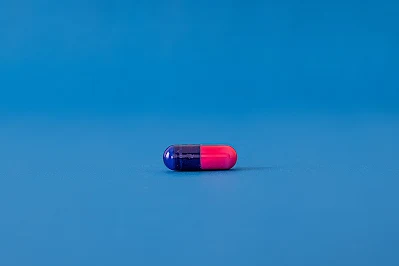The Complete FDA Drug Approval Process

A marketed drug has three names: a compound name, a conventional name, and a brand name. A compound name is given when a new chemical entity (NCE) is created. The chemical name is a scientific term based on the compound's structure (e.g., 6-thioguanine) and is rarely used in clinical or marketing contexts. The conventional name is given by the USAN Council and is commonly used to identify the drug during its clinical life. The brand name is created by the company that licenses the drug, and it is used for the 17 years the company holds the exclusive right to make, sell, and use it under patent law.
The process for naming a marketable drug involves five stages: NCE submission and patent application, generic naming, brand naming, FDA review, and final approval.
NCE Submission and Patent Application
A pharmaceutical company submits information about a new compound to the FDA to classify it as an NCE, which grants permission for animal testing to evaluate any beneficial and harmful effects. Patent application is typically submitted before or during this period, and the legal process can take an average of two years.
Generic Naming Process
The USAN Council is responsible for assigning generic names to chemicals with potential as new drugs. The council is made up of representatives from the United States Pharmacopeia (USP), the American Medical Association (AMA), and the American Pharmaceutical Association (APhA), with the FDA acting as a liaison member. After approval by the USAN Council, the name is sent to the World Health Organization (WHO) for final approval. At this stage, the company begins animal testing for efficacy and toxicity.
Criteria for Generic Name Selection
The USAN Council follows several criteria for selecting a generic name:
- The name should be appropriate for the drug, short, easy to pronounce, and suitable for use both in the United States and internationally.
- The name must not be misleading, confusing, or suggest efficacy or association with specific body parts.
- Related drugs usually have a common stem (e.g., angiotensin-converting enzyme inhibitors ending in "pril").
Brand Naming Process
If a new drug proves effective and safe after animal testing, the company files for an investigational new drug (IND) exemption to allow human testing. The application must include records of preclinical testing and a description of the proposed clinical trials. The IND application is typically around 2,000 pages long.
Companies generally start developing a brand name during Phase I of the IND process, as a strong brand name is crucial to marketing success. Key considerations for brand names include:
- It must be easy to remember and preferred by doctors.
- Short names with subconscious connotations are highly favored.
- Letters such as "X" or "Z" are often associated with brands (e.g., Glaxo and Upjohn).
- If expected to be sold over the counter, the name should not sound too medicinal.
Most pharmaceutical companies hire outside consultants to assess potential brand names for conflicts and submit recommendations. The cost for these consultations can range from $100,000 to $700,000.
FDA and Patent Review
The U.S. Patent and Trademark Office (PTO) reviews drug names to avoid similarities that could cause confusion. The Lanham Act empowers the PTO to grant exclusive rights to companies for trademarks, but the PTO is not authorized to consider how the name will be used commercially. Internationally, names must also be submitted to European patent and trademark offices.
Final FDA Approval Process
After passing through the IND process, the company files a new drug application (NDA) with the FDA, which contains all scientific data and typically runs to 100,000 pages. If the drug is deemed safe and effective, it is approved for marketing and sale.
Impact of Regulation and Pressure on the FDA
The average time for FDA approval in the 1980s was 8.3 years, with the IND process taking 5.5 years and the NDA process taking 2.8 years. However, the Prescription Drug User Fee Act of 1992 helped reduce the NDA process from 30.3 months in 1991 to 17.8 months in 1996. The legal minimum length for an NDA is six months.
Political and public pressure on the FDA to shorten the regulatory process, particularly from patient advocates and pharmaceutical companies, has led to significant changes within the agency. Organizations may pay fees to expedite the NDA process, and the Food and Drug Administration Modernization Act of 1997 further increased these fees, making the review process faster.

No comments:
Post a Comment